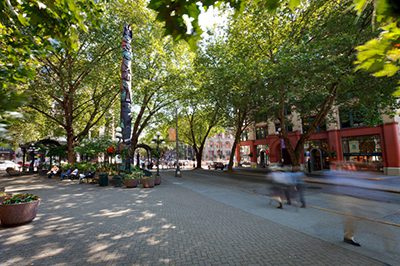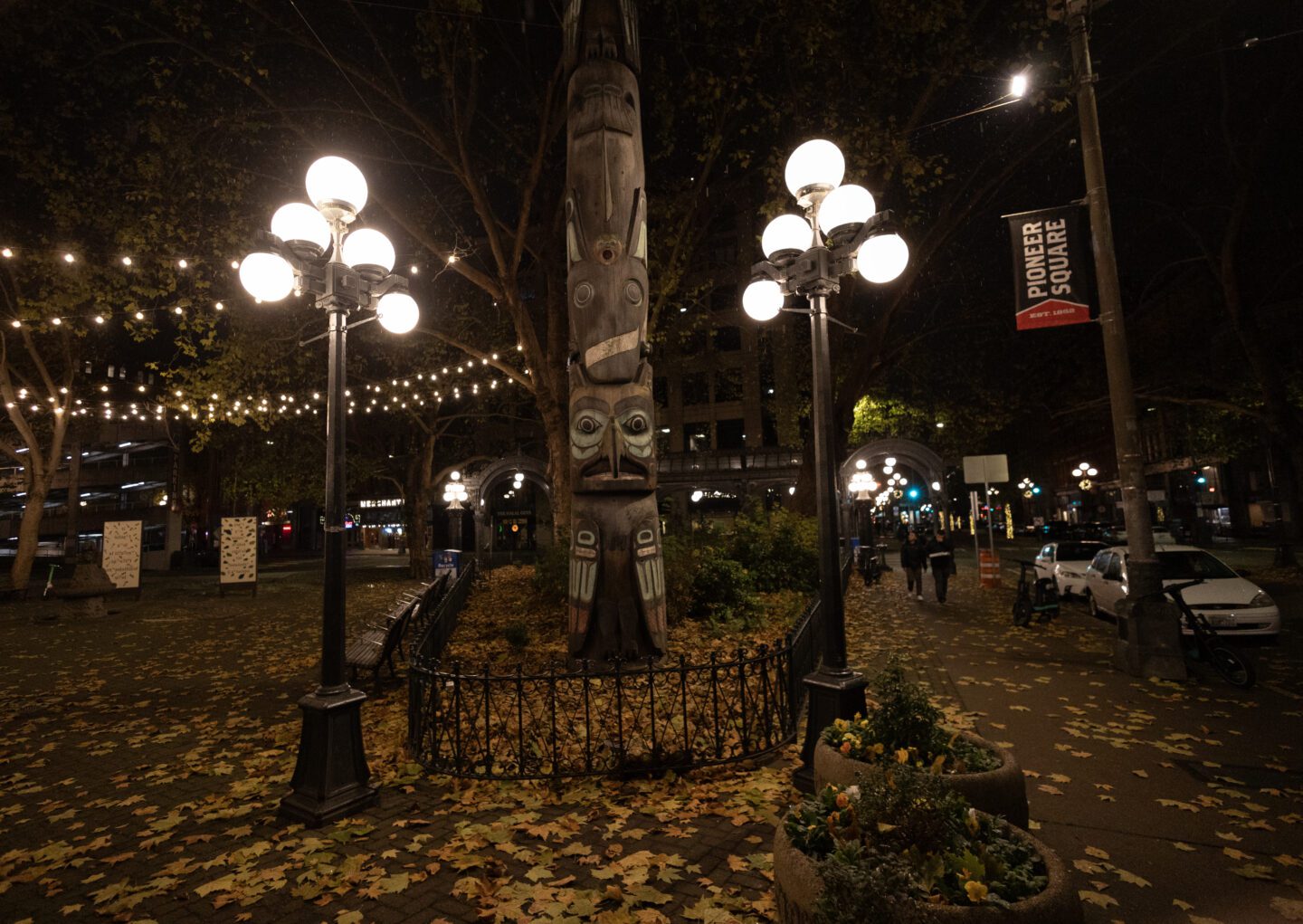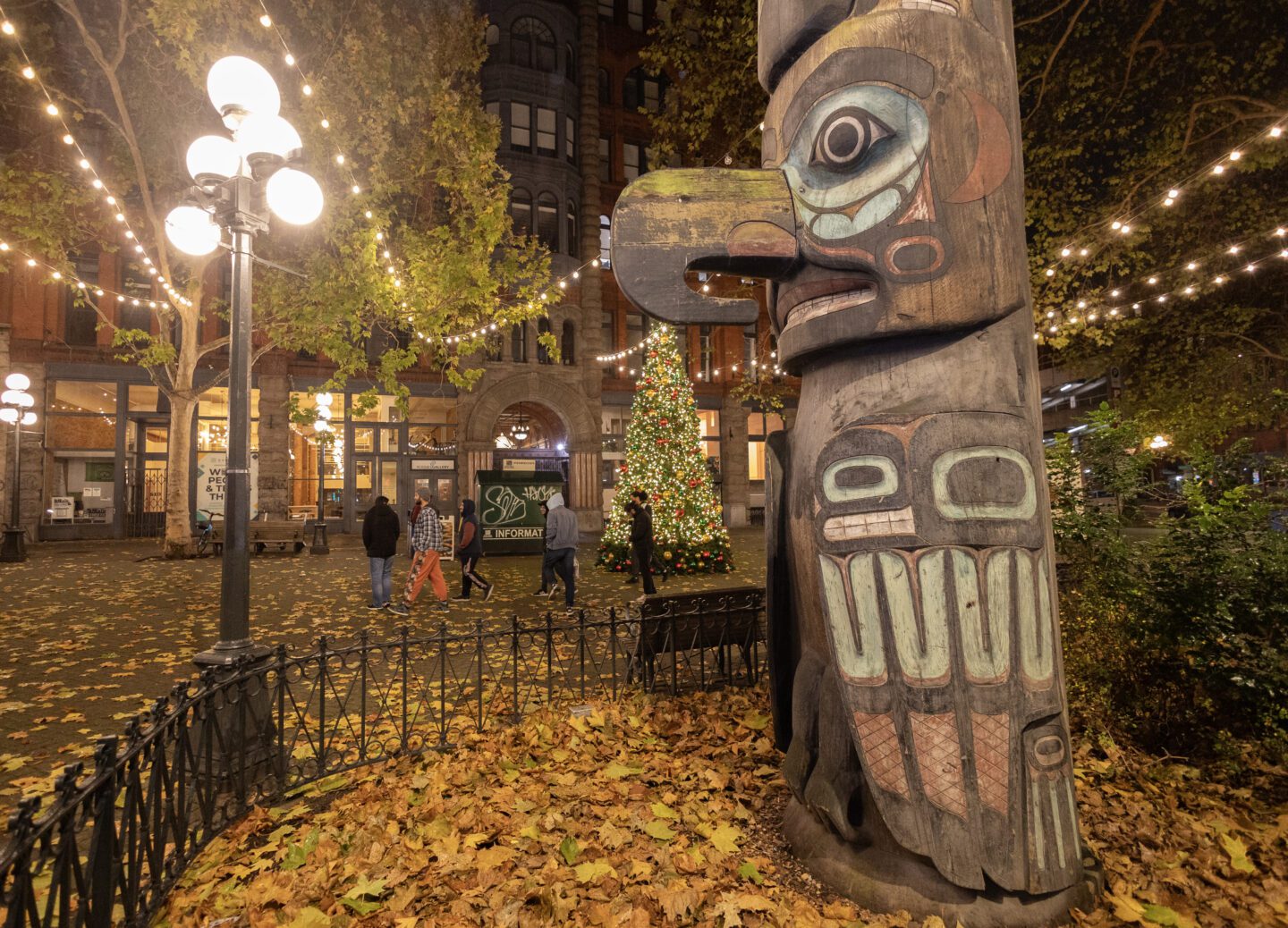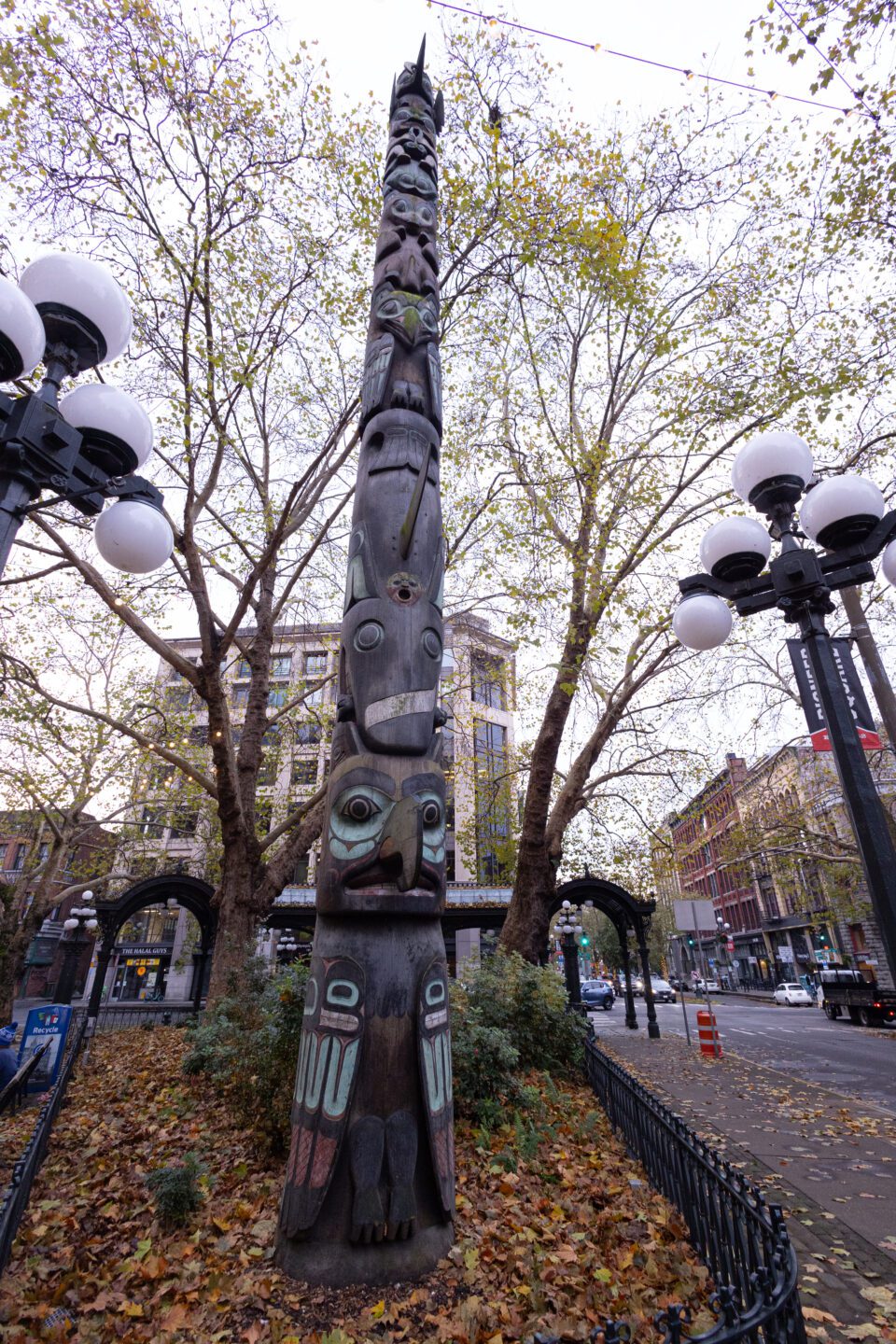-
Seattle Totem Pole
Pioneer Place Park, 100 Yesler Way
At the end of the nineteenth century, as Klondike gold prospectors’ money poured into the city and the population surged, city leaders created a small triangular park at the intersection of Yesler Way and 1st Avenue. Today, this park is known for its ornate Pergola, built originally to serve tourists and transit riders during Seattle’s first world’s fair, the 1909 Alaska-Yukon-Pacific Exposition. It’s also a hub for two of the oldest works in the City’s public art collection and a reminder of the complicated history shared between indigenous people and the early non-Native settlers whose actions forced most of the original peoples from their land. Our first three stops are in this park. We’ll start with the totem pole just north of the pergola.
Seattle Totem Pole (replica) by Charles Brown, William Brown, James Starfish, Robert Harris, William Andrews, and James Andrews (1939-1940)
This totem pole, although one of Seattle’s most iconic public artworks, has a history riddled with controversy. In 1899, a group of Seattle businessmen explored the Alaska Panhandle in an expedition sponsored by a local newspaper. Along with specimens of flora and fauna, the travelers acquired house posts, masks, and bentwood boxes, many without the permission of the owners. Desiring a totem pole, the men asked the captain of their sailing vessel where they might procure one. The captain directed them to Tongass Village, where the Tlingit tribe were away fishing, and the village was virtually empty. There, a 60-foot pole was chopped down, cut in half, and rolled to the boat. Upon return, the Tlingit discovered the theft and brought their grievances to Alaska Territorial Governor John G. Brady (1847-1918). They requested the return of the pole or $20,000 for its purchase. Although a federal grand jury ultimately indicted the businessmen, no attempt was ever made to serve papers or hold them accountable. The newspaper sponsoring the excursion offered the tribe $500, but the money never arrived.
The pole was installed in Pioneer Square on October 18, 1899, to great fanfare, and soon became a city landmark. As was customary, a time capsule containing current newspapers and historical documents was buried beneath the work and remains to this day. On October 22, 1938, the work was damaged by an arsonist, and that, along with discovered dry rot, necessitated its removal. Tlingit carver Charles Brown, and his father William H. Brown, along with Tlingit craftsmen James Starfish, William Andrews, James Andrews, and Robert Harris, all of the Kyan and Kinninook families, were commissioned to create a replica in 1940. The tree for the new totem pole came from U.S. Forest Service land. The artists were paid under a government program promoting the restoration of Native poles across the U.S. A special act of Congress transferred the pole to the City of Seattle from the U.S. Government. The fact that Tlingit carvers recreated the work that was originally taken without permission from a Tlingit village, in all of its detail, does not go unnoticed.





